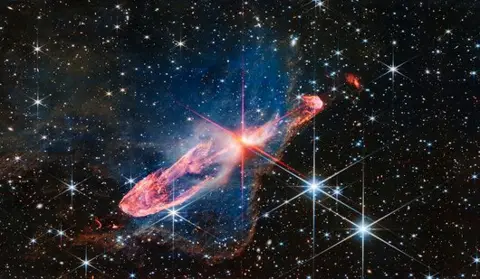Half a world away, Japanese scientists are using shining golden globes to search for the same answers. Gleaming in all its splendour it shines like a temple to science, mirroring the cathedral in South Dakota 6,000 miles (9,650 km) away. The scientists are building Hyper-K – which will be a bigger and better version of their existing neutrino detector, Super-K.
The Japanese-led team will be ready to turn on their neutrino beam in less than three years, several years earlier than the American project. Just like Dune, Hyper-K is an international collaboration. Dr Mark Scott of Imperial College, London believes his team is in pole position to make one of the biggest ever discoveries about the origin of the Universe.
“We switch on earlier and we have a larger detector, so we should have more sensitivity sooner than Dune,” he says.
Having both experiments running together means that scientists will learn more than they would with just one, but, he says, “I would like to get there first!”
 NASA
NASABut Dr Linda Cremonesi, of Queen Mary University of London, who works for the DUNE project, says that getting there first may not give the Japanese-led team the full picture of what is really going on.
“There is an element of a race, but Hyper K does not have yet all of the ingredients that they need to understand if neutrinos and anti-neutrinos behave differently”.
The race may be on, but the first results are only expected in a few years’ time. The question of just what happened at the beginning of time to bring us into existence remains a mystery – for now.